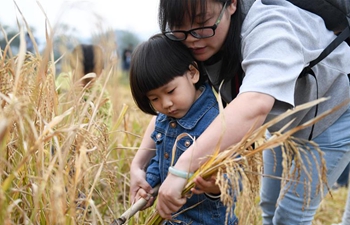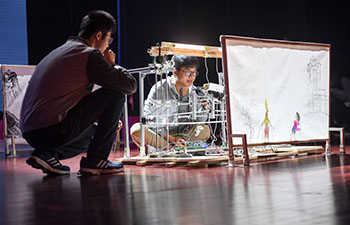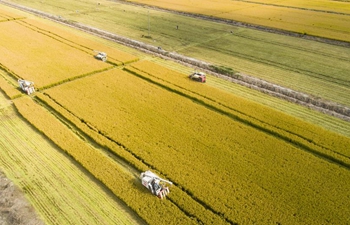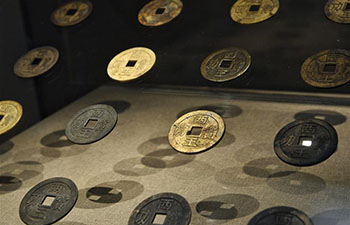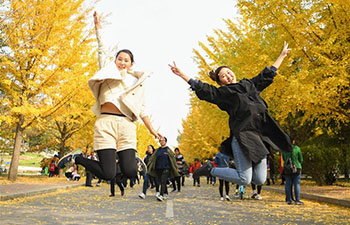by Carina Lopez
MEXICO CITY, Oct. 21 (Xinhua) -- Alebrijes, colorful imaginary creatures that occupy Mexico's world of handicrafts, bring together the entire family of artisans at this time of year.
These creations, which can be fashioned out of papier-mache, clay or wood, first appeared to Mexican craftsman Pedro Linares (1906-1992) in his dream, during an illness that had him bedridden in the late 1930s.
As Linares tells it, he dreamt of a strange place that resembled a forest, where suddenly the rocks, clouds and animals underwent transformations. A donkey grew butterfly wings, a rooster had bull horns, a lion's head was replaced with an eagle's head, and all of them were yelling the word "alebrijes."
Linares decided to bring his visions to life and the art of making alebrijes was born.
Part real, part mythical, these fantastical creatures are treasured by Mexicans and foreigners alike nowadays, and created by a range of artisans, often members of a family who pass the skill down to their children, in Mexican states such as Guanajuato, Hidalgo, Morelos, Oaxaca, Sinaloa and Tlaxcala, as well as Mexico City.
"I really enjoy working with alebrijes. I know I am creating something novel while at the same time continuing a tradition, which gives me great pleasure," craftsman Gabriel Gonzalez Garcia told Xinhua.
To create an alebrije, Gonzalez explained the step-by-step process.
"The first thing you need is an idea. Then we turn it into a model or in other words a figure was made out of the play dough. Then we make the skeleton using metal, followed by 20 layers of papier-mache. Next comes the lacquer and finally very bright paint," he said.
"Some people can make them in 15 days. I feel more relaxed with a month. Normally, family members and friends participate" in the project, he added.
Gonzalez discovered his talent a decade ago while working in sales at a market in Mexico City's populous Iztapalapa district. The market sits across from a cultural center, Faro de Oriente, which offers a variety of workshops for the youth in this area, including working with papier-mache.
"Every Saturday I would go sell toys at the market and I was intrigued by the giant figures being created, mainly by young artisans, at the Faro," Gonzalez said.
He decided to sign up for the workshop. Now he teaches hundreds of youngsters and adults who share the passion for this Mexican handcrafts.
"To create an alebrije is to be reborn. You play again and you create with your hands again like you did as a child. It's a return to doing what I liked, but now in a more professional way," he said.
As he spoke, Gonzalez and his team were hastily working on a winged figure inspired by the sea, which later formed part of the 2018 Parade of Giant Alebrijes along the capital's main Paseo de la Reforma avenue on Oct. 20.
The parade, organized annually by the Museum of Folk Art (MAP), is in support of the union of families of artisans, and draws thousands of people. Nearly 200 alebrijes have been on parade this year.
"I am always anxiously awaiting the date each year to create and display my alebrije because I get together with friends and relatives so they can help me," said Gonzalez. "We reunite and we hug again. Someone brings food and thus it turns into a party."
Even neighbors tend to show up to help put the finishing touches on the creation.
In recent years, as innovative materials and even robotics have emerged, the making of alebrije has evolved.
Gonzalez noted that without any doubt, the alebrijes are a reflection of what is happening today in Mexico.
"They will never go out of style because imagination and art will never go out of style," said Gonzalez.
